Four facets of an effective grassroots innovation program
Designing an effective and sustainable corporate innovation program is a big challenge—what's been missing is an assessment model.
 Vegetalist and animal intricate capital and column carvings in Santiago Church. (source: Jl FilpoC on Wikimedia Commons)
Vegetalist and animal intricate capital and column carvings in Santiago Church. (source: Jl FilpoC on Wikimedia Commons)
Every company cares about innovation. Innovation drives growth and keeps companies relevant in a rapidly changing world. Companies want to do the disrupting instead of being disrupted. They want to attract the best employees and cultivate a culture that keeps them engaged and highly productive.
That is why many companies have launched grassroots innovation programs that tap into their employees’ passion to drive growth. These programs come in many shapes and sizes. Some provide training to help employees become more innovative. Others feature regular hackathons with prizes and the possibility for employees’ ideas to become formal projects. Some set aside time for every employee to work on their own ideas.
But are these programs really effective or are they, what Steve Blank has coined, innovation theater? Certainly, many of these grassroots innovation programs have been successful. Google’s 20% time yielded Gmail and Adsense. Facebook’s “like” button came from one of its hackathons. Intuit’s Unstructured Time program yielded its TurboTax mobile application.
But many grassroots innovation programs face real challenges. Google’s 20% time is mocked by some employees as “120% time” because they are too busy with their day jobs. In some companies, hackathons have lost their novelty and employees have become increasingly cynical about their ability to enable real change.
Clearly designing an effective and sustainable corporate innovation program is a big challenge. What’s been missing is a model to assess different programs and provide guidance on how to improve them.
With that in mind, we are proposing an assessment model that constitutes the following four facets of an effective grassroots innovation program:
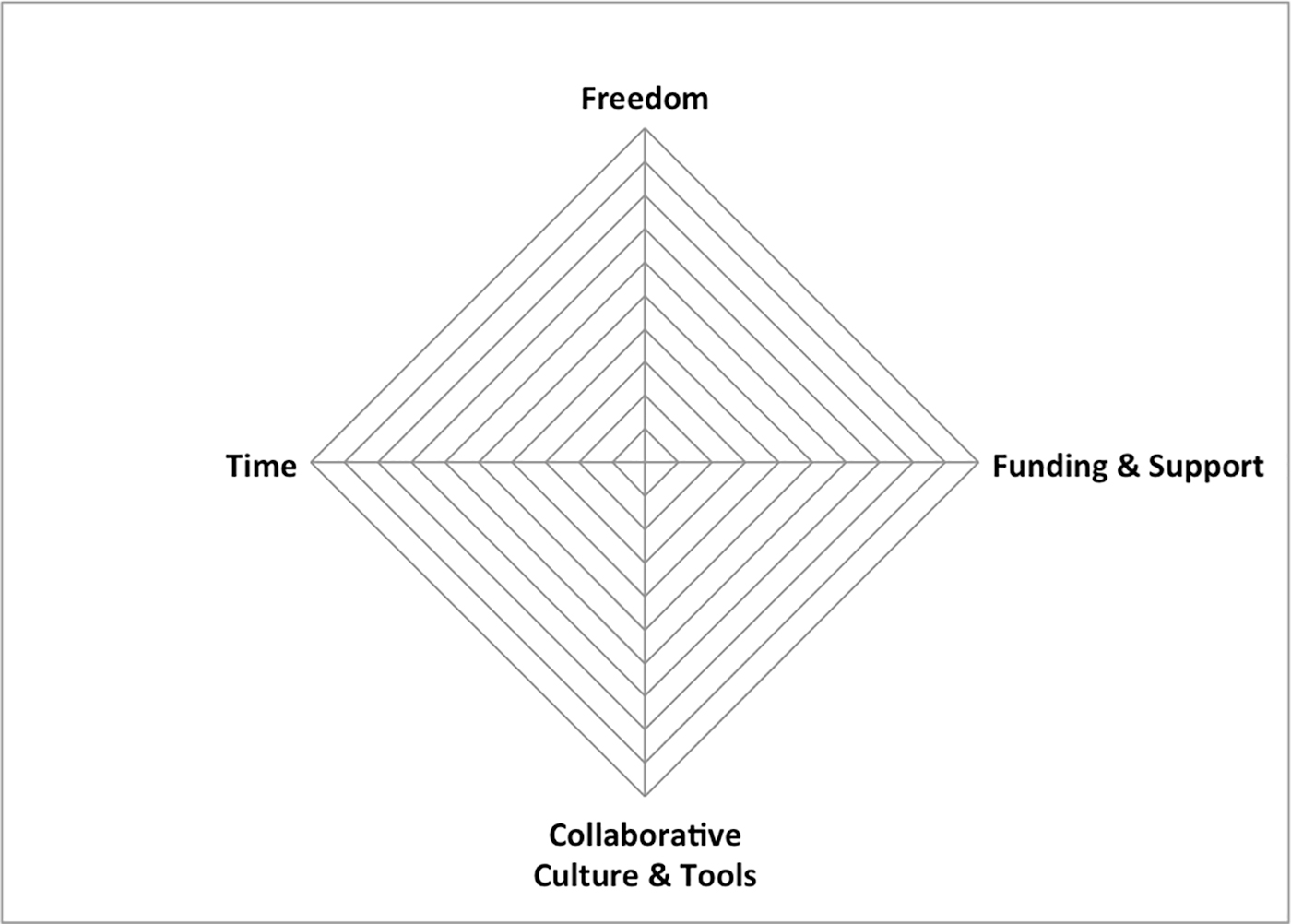
- Freedom: Employees are given autonomy to explore ideas they are passionate about.
- Time: Employees are given self-directed time, carved out from their day jobs, to work on their own projects.
- Collaborative culture and tools: Employees can easily find out what other employees are working on in their self-directed projects, provide feedback, and form teams across organizational and geographic boundaries.
- Funding and support: Employees are given resources, tools, training, and senior leadership mentoring to develop their self-directed projects. A formal process is in place allowing projects to “graduate” to officially funded initiatives.
Many grassroots innovation programs we’ve observed fail to properly develop each of these facets. Although we believe having any kind of innovation program is better than doing nothing, we hope this assessment will help show more organizations an effective path forward.
Here’s our diagnosis of what can result from incomplete innovation programs:
-
Where’s the money?
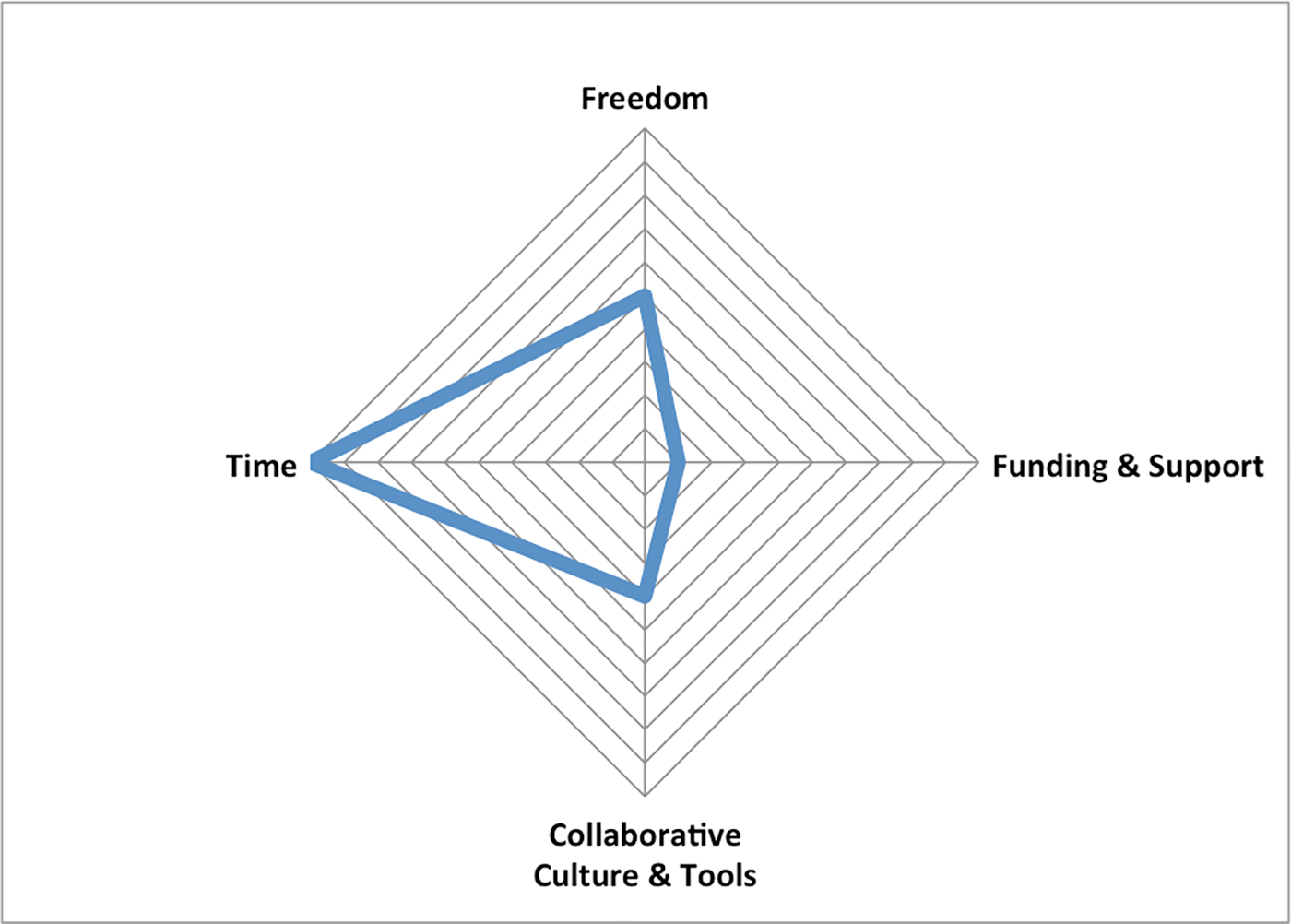
These companies have implemented self-directed time programs without funding and support. The companies achieve a significant increase in employee engagement from employees who take advantage of the self-directed time. However, many employees get frustrated that they don’t see a path to move their projects forward beyond presentations or early prototypes.
-
Who has the time?
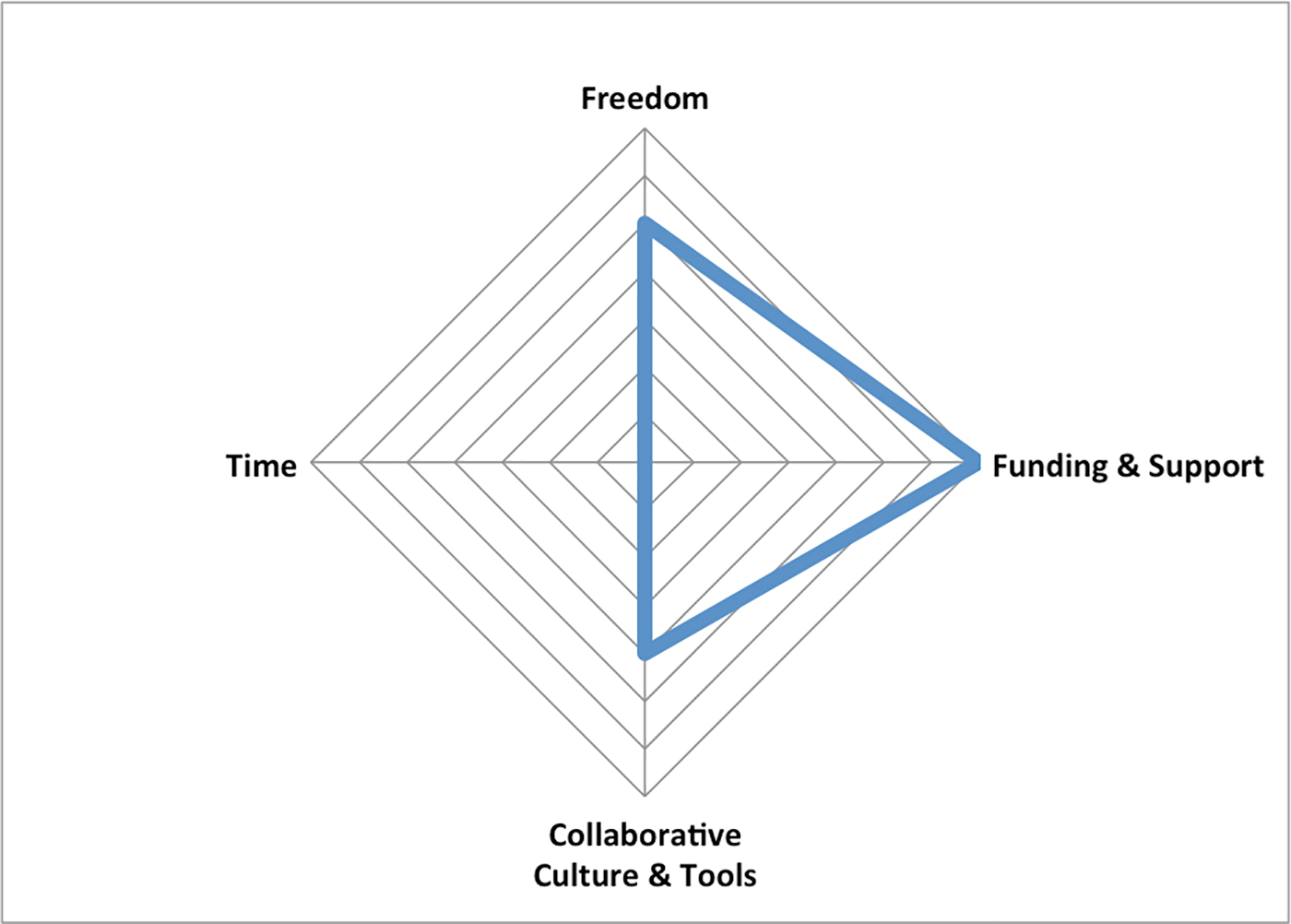
Typically, these companies hold events that employees can sign up for to develop their projects with some funding to run in-market experimentation. These “hackathons” can be high-energy and drive engagement. However, no time is set aside to continue work on the project after the event. The effectiveness of the events over time start to diminish as the novelty factor wears off. Innovation becomes episodic instead of all the time.
-
Feels like my regular job
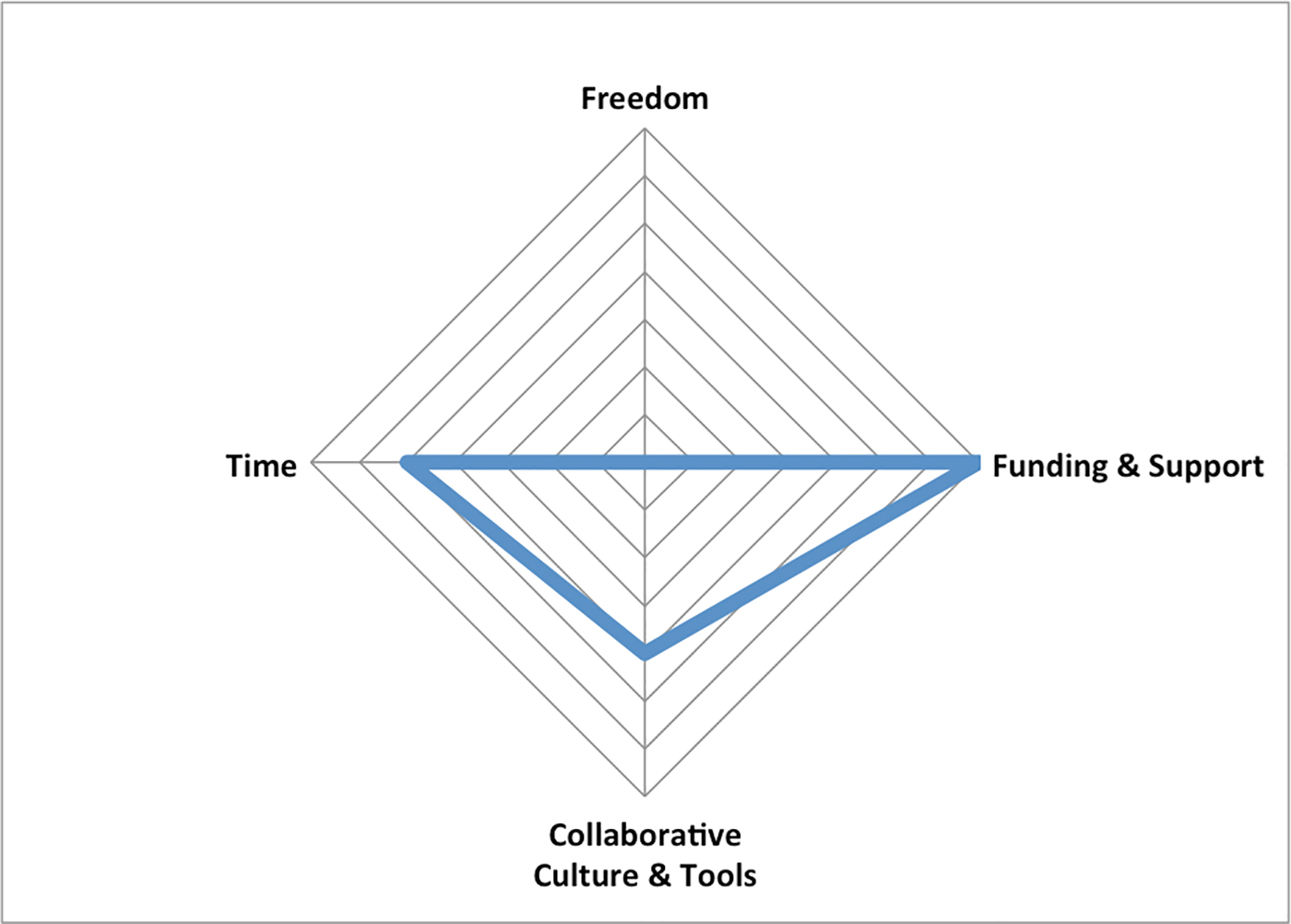
These companies provide self-directed time programs with the promise of resources and support. Each project must be approved by management before moving forward. While these programs are initially received well by employees, they can eventually succumb to cynicism because of perceived management favoritism or biases. Also, each project that gets greenlighted can be afflicted by what feels like overbearing management oversight.
-
Difficult to find a team
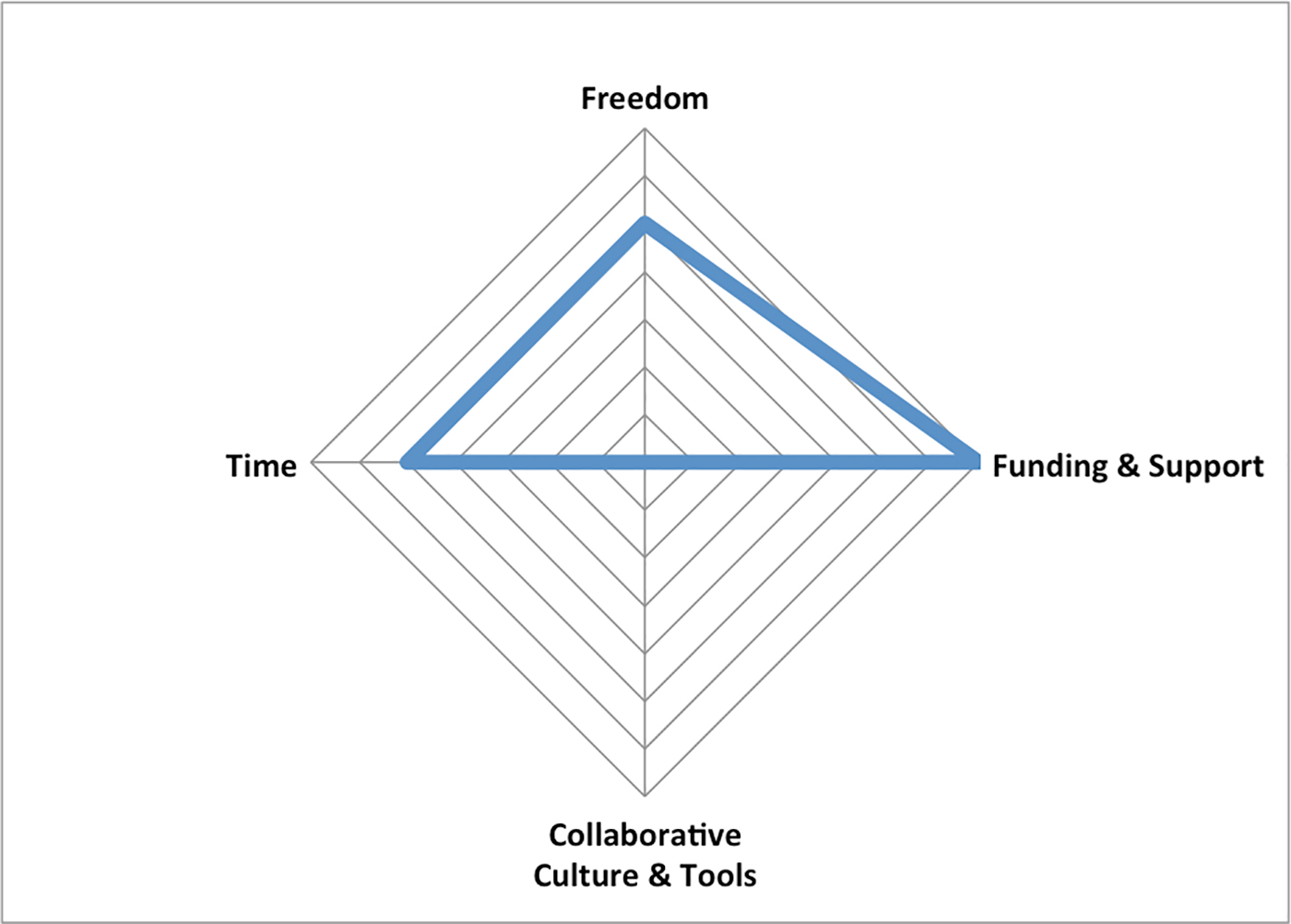
These companies provide time and support for self-directed project but don’t have a formal system in place that lists these projects. As a result, employees are limited to recruiting team members from people they already know. Unwittingly, multiple teams might be trying to solve the very same problem.
-
We rock!
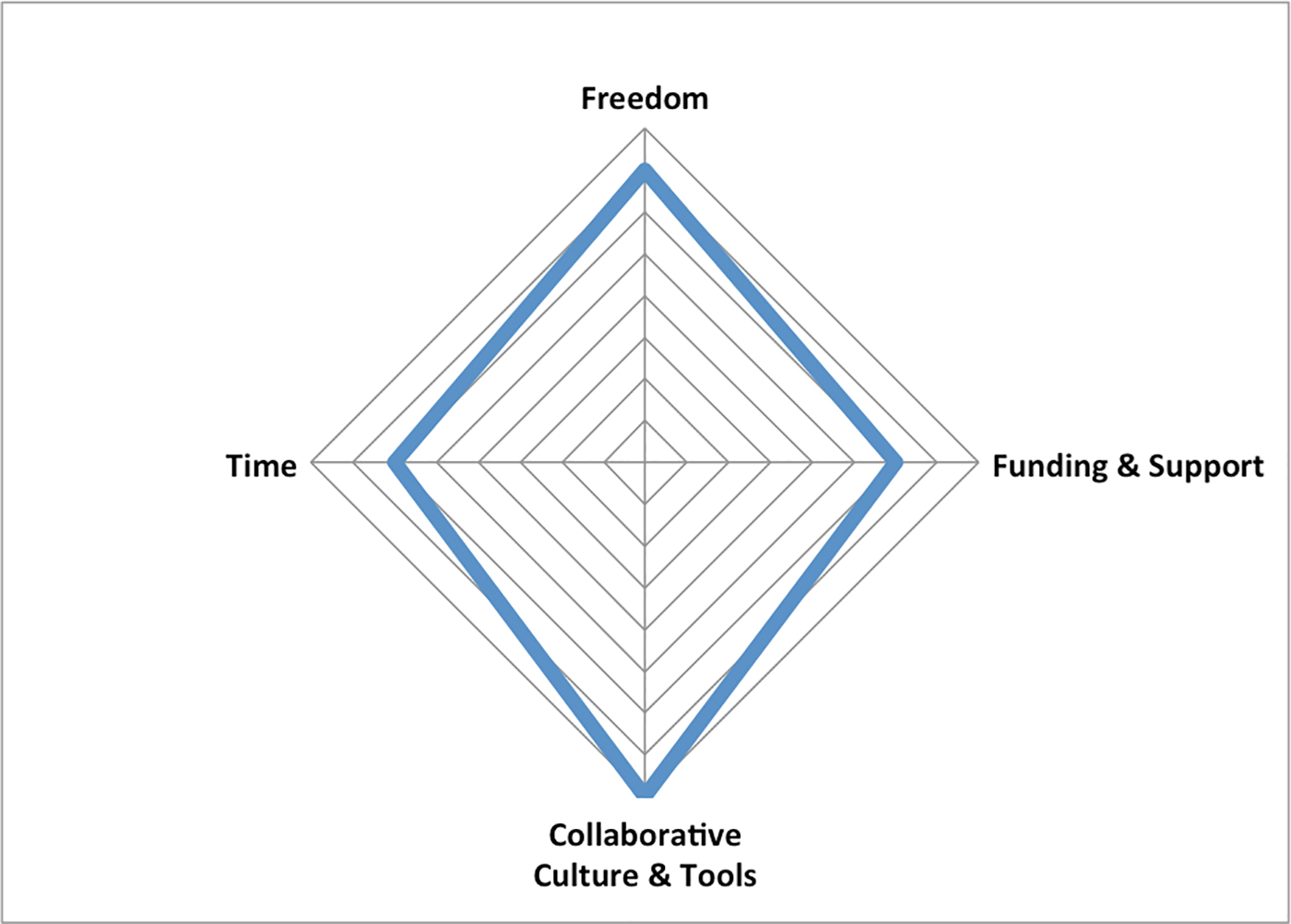
These companies are delivering on all facets with a regular pipeline of employee ideas that become new products delivering growth. We believe this is what every grassroots innovation program should aspire to.
Jeff Zias and I are writing a book on grassroots innovation in enterprises and would like to get your feedback on this model. Does your company have a grassroots innovation program? If so, please use our Grassroots Innovation Program Assessment poll to evaluate your program using this model. Please let us know if you found this helpful and if you have ideas on how to make this assessment more robust. We look forward to hearing from you.
